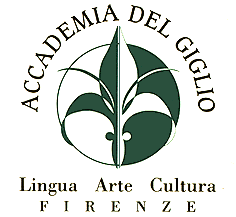 Some weeks ago in a nice sunny day I decided to visit the Santa Maria Novella’s cloisters. It was a long time since I last went there and it was so pleasant to find the same peacefulness and tranquillity as I remembered. There are three cloisters inside Santa Maria Novella, but it is possible to visit only two cloisters: the Green Cloister, which is situated on the left side of the church and which was built after 1350, and the older Cloister of the Departed, constructed by the Dominicans probably around 1270.
Some weeks ago in a nice sunny day I decided to visit the Santa Maria Novella’s cloisters. It was a long time since I last went there and it was so pleasant to find the same peacefulness and tranquillity as I remembered. There are three cloisters inside Santa Maria Novella, but it is possible to visit only two cloisters: the Green Cloister, which is situated on the left side of the church and which was built after 1350, and the older Cloister of the Departed, constructed by the Dominicans probably around 1270.
The third cloister is the Grand Cloister: it is the largest in Florence and since 1920 it has been the premises of the Carabinieri school.
After a short visit to the Cloister of the Departed, I went to the Green Cloister, named after the earth green colour used in the frescoes by Paolo Uccello, one of the most famous painter in the 15th Century.
To reach the cloister I walked through a quite dark courtyard and when I went out I saw in front of me, right in the centre of the cloister, the cypress-surrounded fountain and, on the right, the marvellous frescoes by Paolo Uccello (around 1446). I admired in astonishment the extreme and dramatic perspective of the scenes representing the Flood, the Recession of the Flood and the Drunkenness and Sacrifice of Noah. Then, after few minutes minutes, I walked through the cloister admiring the grand arcades with lowered curvature and the strong crossing vaults: I sat there looking around and forgetting the traffic noise and the everyday stress. When I got up and decided to continue my visit I realized that I had been sitting there for almost half an hour and it was time then to see the Spanish Chapel, which was built approximately between 1343-1346 and frescoed by Andrea Bonaiuti around 1365.
It was called “Spanish Chapel” in the middle of 16th century when the wife of Cosimo I, Eleonora di Toledo, intended it as a place of worship for the Spanish community.
In the wall on the right you can see the Triumph of Saint Thomas, where the Saint is surrounded by theological and cardinal virtues, painted as winged figures, and by the female personifications of the holy sciences and the liberal arts.
The frescoes were inspired by the sermons of the prior of the monastery during that period, Fra Jacopo Passavanti, and the iconography represents the role of Dominicans preaching in the society, for the salvation of mankind: in the foreground we can see many dogs, white and black, running around. They represent the Dominicans: in latin the name of the order is similar to the words “Domini canes”, that mean “God’s dogs”. That’s why the dogs represented in the frescoes are black and white as the tunic of the friars, they are the symbol of the order.
When I went out it was late and I found myself again riding my bike back in the traffic and in the noise of the city.
The Santa Maria Novella’s CloistersScrivi un commento |







Commenti recenti